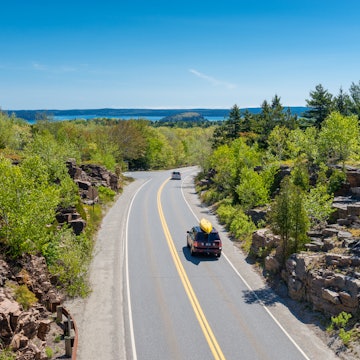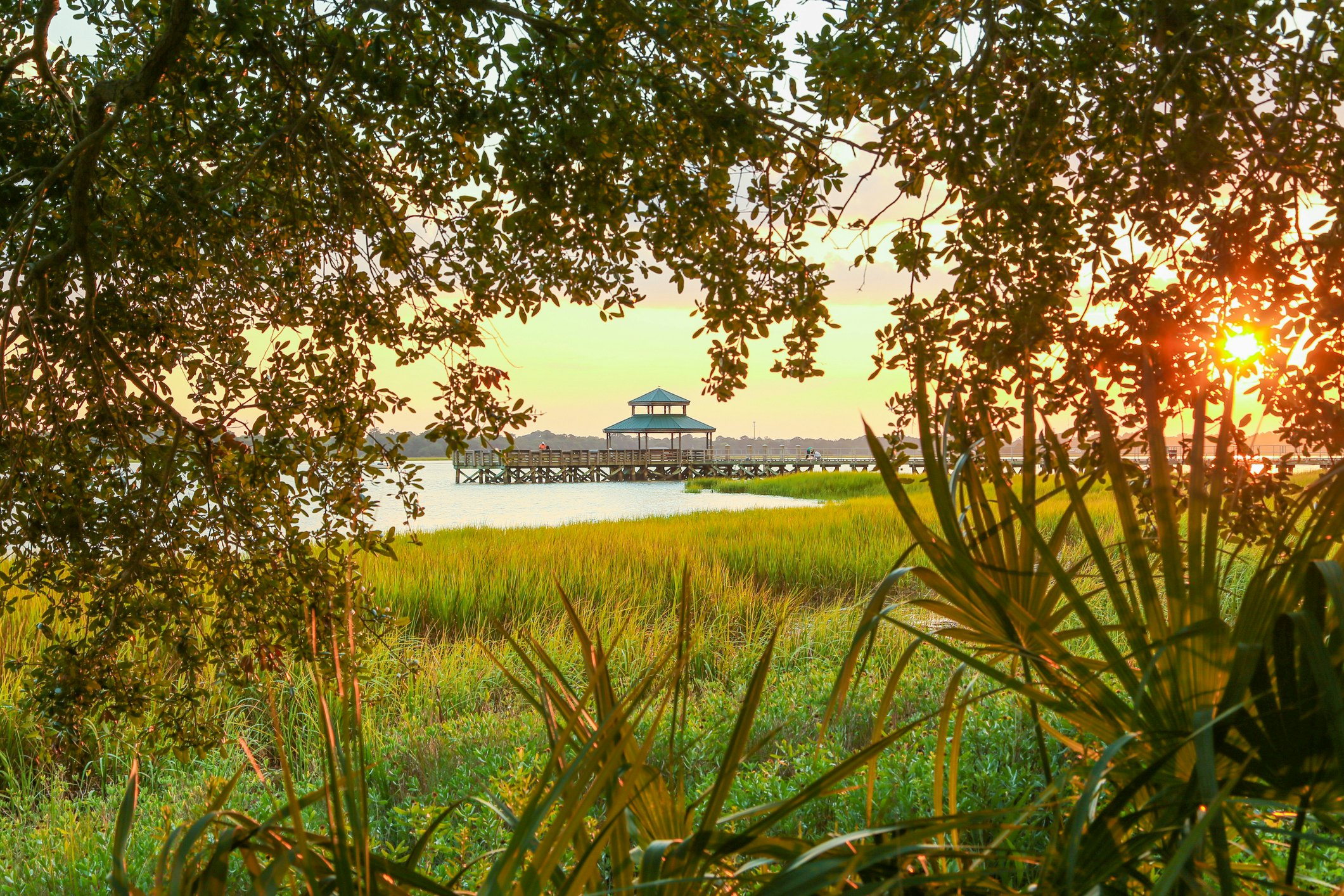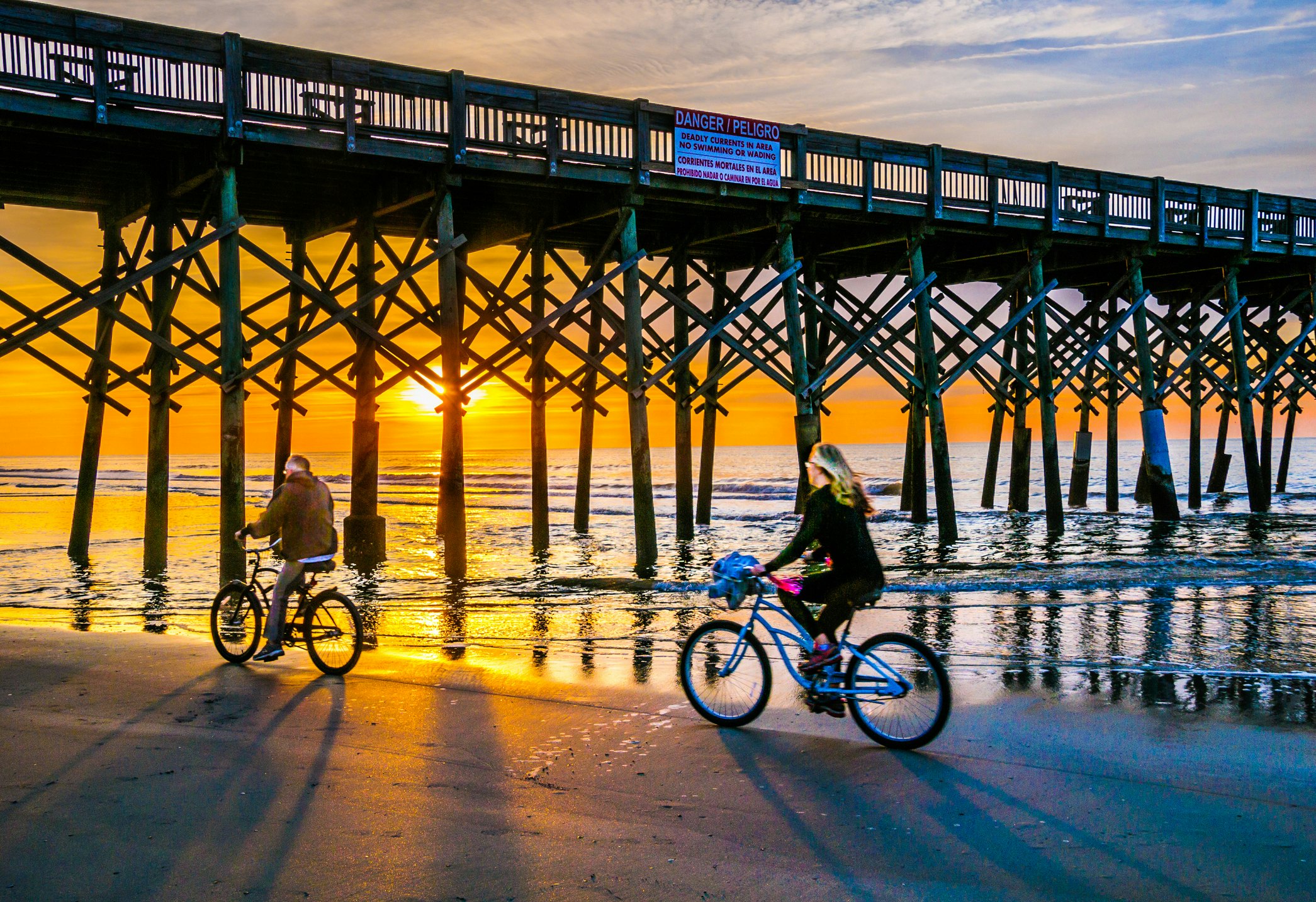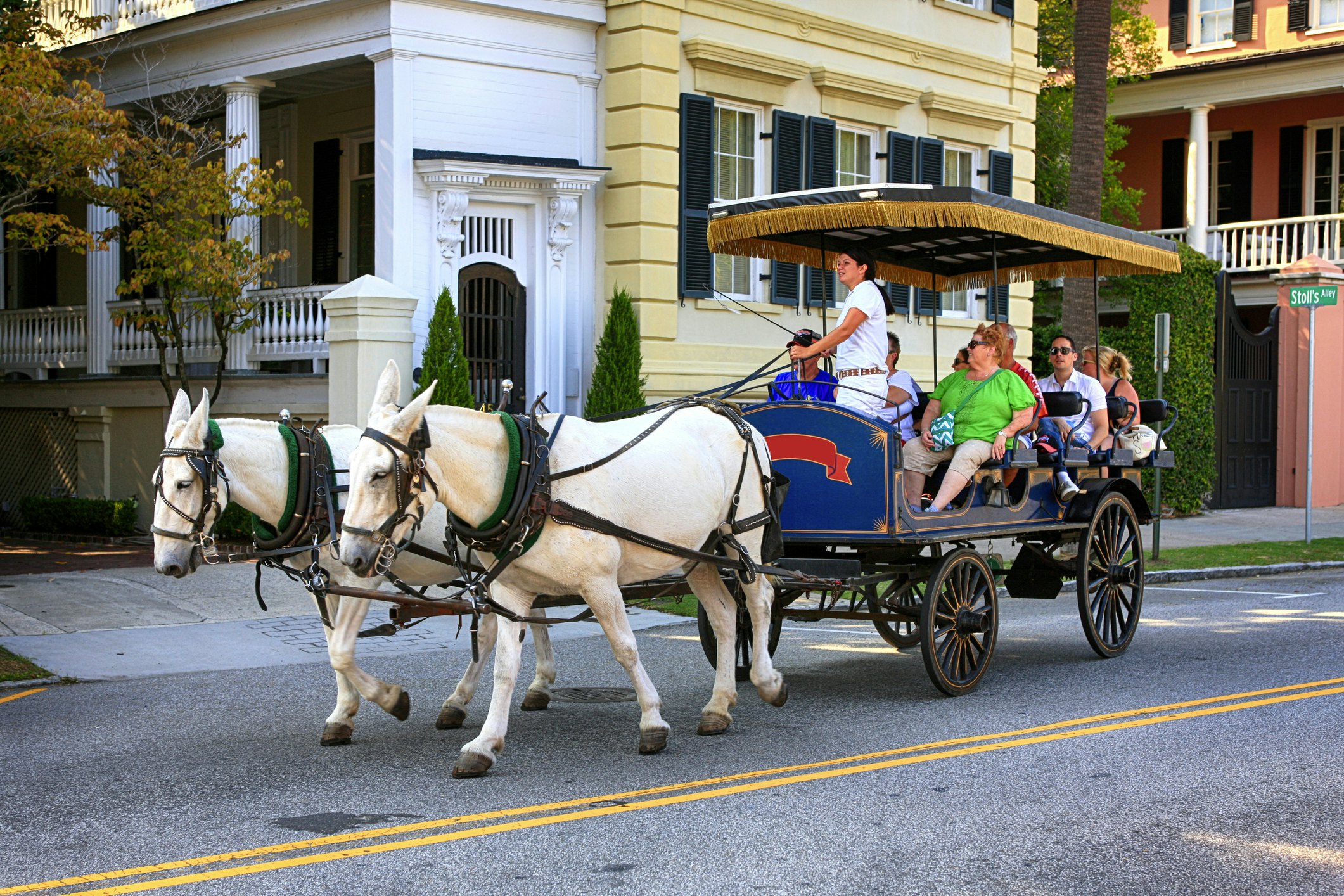

King Street is the primary north-south corridor in Charleston, South Carolina's historic district © krblokhin / Getty Images
Downtown Charleston, South Carolina, is compact and pedestrian-friendly. You won't need a car if you're planning a short weekend trip and aren’t leaving the core, which is packed with restaurants, shops and historic sites.
Free shuttles loop around the city on three routes. The Green Line (Route 211) stops at key areas within the historic district. The Charleston Visitor Center at 375 Meeting St doubles as a transportation hub for the shuttles. With maps and loads of information, the visitor center is a good place to start your visit.
On foot
With sidewalks linking its shops, restaurants, churches, museums and historic homes, downtown Charleston is easy to explore. Just be aware that some older sidewalks may be a little uneven. Its borders are somewhat loose, but the historic core stretches from Calhoun St south to the Battery – it’s just over a mile between the two. You’ll find many of the city’s most well-known historic sites as well as its top restaurants here. If you get tired of walking, hop on the DASH (Downtown Area Shuttle) Green Line.
Downtown Charleston encompasses no more than five square miles. The area south of Calhoun St is home to four neighborhoods: Harleston Village, Ansonborough, the French Quarter and the South of Broad area, which holds well-preserved churches, colorful Rainbow Row, the Battery & White Point Garden and a slew of architecturally striking homes. Look out for the distinct single houses, which are long and narrow homes marked by breeze-catching sideways porches. A handful of bumpy cobblestone streets in the French Quarter and South of Broad can be a little tricky to walk.
King Street is the primary north-south corridor in the historic district, and it is lined with shops, restaurants and galleries.

DASH shuttle and bus
The Charleston Area Regional Transit Authority (CARTA) runs free shuttles, regular buses and express buses.
DASH shuttle
For visitors, the DASH via its Green Line is the most convenient way to explore the historic district. DASH buses loop around the Charleston peninsula on three routes. All of them stop by the visitor center.
The Green Line travels from the visitor center south along King St to Broad St then follows the latter to the Four Corners of the Law intersection at Meeting St. It then continues to the Old Exchange & Provost Dungeon, Waterfront Park and the Charleston Market. The Orange Line (Route 210) connects with the South Carolina Aquarium and the College of Charleston. The Purple Line (Route 213) loops to the College of Charleston, Medical University of South Carolina and the medical complex, Brittlebank Park and The Citadel. DASH buses run from about 7am to 10pm weekdays, with slightly reduced hours Saturdays and Sundays.
Bus
CARTA also operates 16 regular bus routes and three express bus routes in and around the city. Route 11/Dorchester Rd links the visitor center with the airport. One-way fares are $2 for a regular route and $3.50 for an express route. On-board fares are cash only, and the driver cannot make change. A day pass is $7 and can be purchased at the visitor center. Children under 6 years old riding with a paying passenger are free.
Download the Transit app to track buses in real-time.
Car
If you’re planning to spend a weekend exploring downtown Charleston and its historic district, you don’t need a car. Hotel parking can be expensive, and it can be hard to find street parking. Walking, riding the DASH or taking a short ride with Uber or Lyft should be sufficient. If you plan to visit the Ashley River Plantations, explore the Lowcountry or hit a nearby beach, a car is needed. There are eight rental car agencies at Charleston International Airport and a handful of car rental offices downtown.
Parking at city-run garages costs $1 per half-hour. City-run parking lots cost $1 to $2 per half-hour. There may be discounted flat fees after 5pm. Street parking at meters costs $1 per half-hour, and meters accept coins and credit cards. Meters are in operation from 9am-6pm Monday through Saturday.
Expect congestion on I-17 and I-26 during the morning and afternoon rush hours. With an abundance of bridges, tourists coming and going, and an influx of new residents across the region, traffic jams and slow-moving bottlenecks are not uncommon any time of the day.
Taxi and ride-hailing
Taxis are available in Charleston as are Uber and Lyft. From Charleston International Airport, there is a $15 minimum fee for taxi service. Taxis from the airport to the peninsula can run as high as $50 to $60 depending on the location of your hotel. Ride-hail pricing can be significantly lower, depending on demand. Also check to see if your hotel runs a shuttle to the airport. The airport is 12 miles from downtown.
Taxi service can be unreliable downtown, so Uber and Lyft are the best options for short trips to restaurants and attractions.

Bike
With level topography and short city blocks that keep cars from going too fast, the peninsula is a good place to bike ride. There are a handful of bike and ebike rental shops in and around downtown. The city also has a point-to-point bike share program, Holy Spokes, which has numerous bike stations across the peninsula.
In January 2022 it was announced that mobility company Lime would take over the operation of the bike-share program when Holy Spokes' contract expires in February. Currently Holy Spokes has 250 bikes available. The use fee is $8 per hour or $20 per day. Read all of the locking requirements so that you won’t be charged an extra fee.
You won't find bike lanes downtown, but you can bike across the 2.5-mile Ravenel Bridge to Mount Pleasant on the designated multi-use path. Biking can also be fun on the islands and along the beaches a short drive from downtown. CARTA buses have racks that can accommodate bicycles.
Accessible transportation in Charleston
CARTA’s fixed-route buses are compliant with the Americans with Disabilities Act (ADA). Buses have lifts that accommodate wheelchairs and other mobility devices. Buses can also lower themselves to the curb to make boarding easier. Priority seating for wheelchairs is available at the front of the bus, and drivers will secure wheelchairs and scooters. Service animals are permitted.
Fares are 75 cents for disabled travelers on fixed routes. Locals can show their valid CARTA card for the reduced fare while visitors may use a Medicaid card or a Disabled ID card from their home transit system. Paratransit options may be available through Tel-A-Ride if you have a certification card, and passengers with a Tel-A-Ride ID card can ride fixed routes for free. Visit the CARTA website for more details about ADA services.
Folly Beach County Park offers accessible parking, bathrooms and outdoor changing areas. There is also an accessible beach path. Kiawah Beachwalker Park on Kiawah Island also has accessible parking, bathrooms and outdoor changing areas. Beach-accessible wheelchairs are available first-come, first-served at both parks.
Free parking is available for those with disabilities at metered parking spaces and at government-run metered lots.
Download Lonely Planet’s free online guide for accessible travel online resources.

Historic district tours and carriage rides
Walking tours and carriage rides aren’t designed for point-to-point travel, but they can be a fun and informative introduction to the city and its history. Charleston Footprints offers walking tours by a knowledgeable local guide. You can take your pick of food, history or ghosts on a themed walking tour with Bulldog Tours.
Horse-drawn carriage rides are a common part of the city tableau, and you’ll see them departing from their gathering areas near City Market. Operating since 1972, Palmetto Carriage Works is Charleston’s oldest carriage tour. As with other cities, carriage rides in Charleston have gained the attention of animal welfare advocates, who say the city's summer temps and working conditions negatively impact the animals.
Water taxi
Charleston Water Taxi runs a ferry service that loops between four stops on the Cooper River. On the Charleston Peninsula, the ferry stops at Waterfront Park then travels north to the Charleston Maritime Center, which is adjacent to the South Carolina Aquarium. From there the ferry crosses the river, stopping at Patriot Point, which is home to Patriot’s Point Naval & Maritime Museum. The water taxi then travels south to the Charleston Harbor Marina. An all-day ferry pass is $12. Ferries depart on the hour and half hour, from about 9am to 7:30pm depending on location.
You might also like:
The best parks in Charleston
Best times to visit Charleston
Charleston vs. Savannah: how to choose between the two Southern cities
















